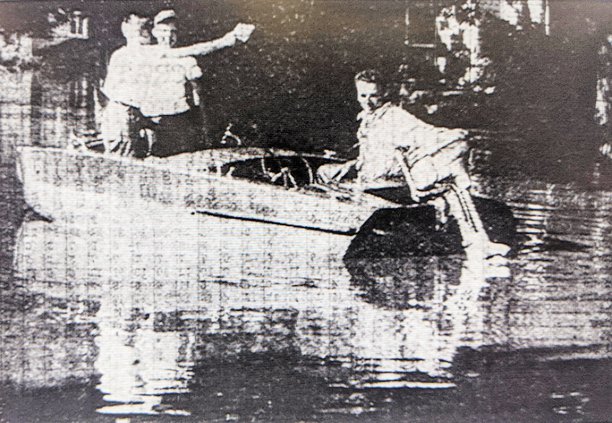Each week we’ll take a step back into the history of Great Bend through the eyes of reporters past. We’ll reacquaint you with what went into creating the Great Bend of today, and do our best to update you on what “the rest of the story” turned out to be.
Bowling has been around since the early 1800s in America but with informal rules until the late 1890’s when a bowler named Joe Thum of New York developed unified standards. In 1895, the American Bowling Congress was formed in New York City with Thoms Curtis the organization’s first president. You can learn more about the early history of the organization and the beginning of women’s bowling as well at the online bowling museum (https://www.bowlingmuseum.com/Visit/Online-Exhibits/History-of-Bowling-in-the-US ).
What the online museum fails to share is how the ABC included a “White males only” clause in their constitution. Integrating bowling, it turns out was even more difficult than integrating baseball, football, basketball and golfing.
According to columnist and professor of history Greg Robinson, writing for Nichibei.org, a Japanese news and culture website, while it was the NAACP and the United Auto Workers _Congress of Industrial Occupations union that led the fight to get the ABC to drop the clause after the end of WWII in 1945, the exclusion included all minorities. By 1946, the Japanese American Citizens League also took up the fight. In 1947, the National Committee for Fair Play in Bowling was formed, and future U.S. Senator and Vice President Hubert Humphrey, then mayor of Minneapolis, agreed to serve as the chair, and pro golfer Betty Hicks was named the vice chair.
Needless to say, with pressure building from many groups, numerous lawsuits, and with rival organizations bypassing the ABC and organizing their own leagues and tournaments, ABC was in danger of becoming irrelevant. A California member of the Boeing league proposed a resolution to remove the exclusionary clause in May, 1950. Southern delegates proposed a work-around to continue to practice racial discrimination by requiring members affiliate with local associations. The proposal acted as a compromise, so by Aug. 1, 1950, the exclusionary policy was removed and in many parts of the country, minorities of all kinds were allowed to play and compete in ABC sanctioned events.
In 2005, the ABC merged with the Women’s International Bowling Congress (founded in 1916 when ABC added it’s “white males only” clause), as well as the Young American Bowling Alliance and USA Bowling to become the United States Bowling Congress.
Flood of 1950
In Great Bend, it’s a safe bet bowling was the furthest thing from most people’s minds this week. That’s because there was widespread flooding in the city, and 54 families had to evacuate and were sheltering at the Great Bend City Auditorium.
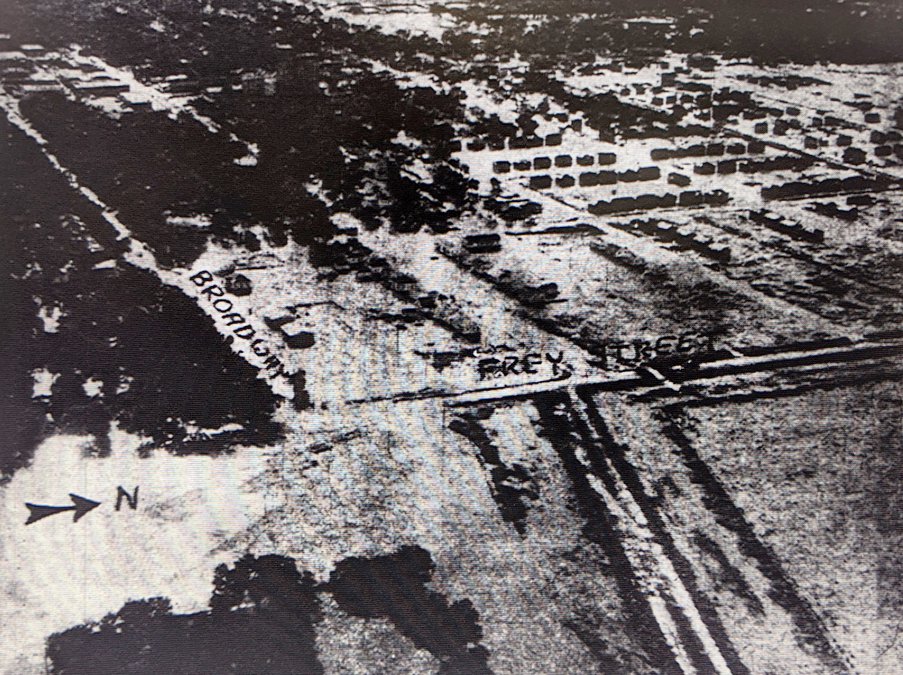
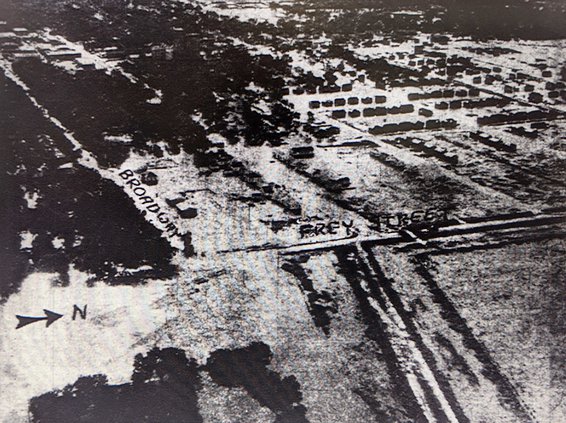
The experience was familiar, as the city had flooded the year before as well. Several days of rain and the resulting saturated ground meant additional rain had nowhere to go but over the banks of Walnut Creek and the Arkansas River, and into the low-lying areas of the city. A new subdivision, Edgepark, appeared to be the heaviest hit. Based on the photo captions in that week’s Great Bend Tribune, it included the neighborhood north of the City Park, but flood waters were a problem all the way east past Frey Street.
Volunteers from around the area came to the rescue of those displaced. The Tribune reported “The first cots received by the Red Cross came from Mr. and Mrs. N.R. Sanford of Hoisington who brought in 29 cots at 20 minutes after midnight (Aug. 1). This morning, Mayor Art Barger of Larned, answering the appeal from the Red Cross, rounded up 150 cots from the Boy Scout camp at Camp Pawnee, and they were brought over by the National Guard unit at Larned. The guardsmen were given breakfast after they unloaded the cots. Chairman John Snyder of the Red Cross paid high tribute to Barger for rounding up the cots.”
There was even an effort to save furniture from the flooded homes. “Furniture evacuated from Edgepark is to be stored at the airport. Ned Darr, airport manager, is in charge.”
Darr was busy with more than directing storage of furniture. He also took a Tribune reporter up for an aerial view of the flooding, and those photos appeared on the front pages of the paper during the week.

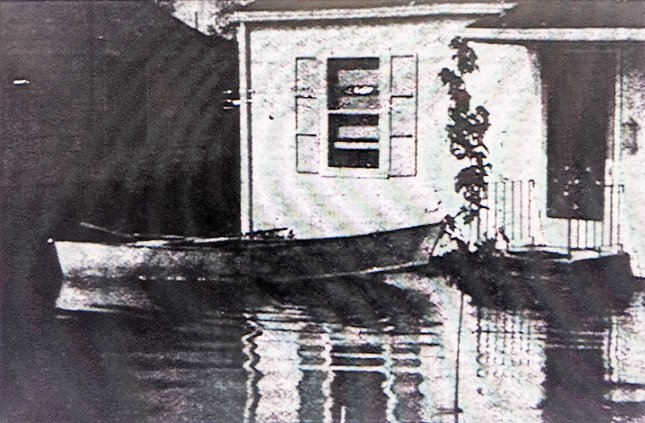
Flood control a hot-button
Coming up with a solution to the periodic flooding that plagued Great Bend throughout its history was not a new topic. The problem was a bigger one than the local population could solve on its own. The Tribune editorial staff summed it up.
“These congressmen who have prevented the integration of dam building, dredging and levee-construction in order to keep flood projects in the capitol’s pork barrel are traitors in a far deeper sense than the Alger Hisses and Toyo Roses. They have never stood thigh-deep in a flood, their boots filling with rich topsoil and their ears ringing with the anguish of the evacuees.
“Flood control is a matter of national defense. On a river-valley basis, it makes sense. ON a town-by-town, gerrymandered basis it is pure criminality. Patchwork flood control has cost the nation billions of tons of its topsoil, billions of dollars in property.”
Whatever the cost, the Tribune stated the people were game, as taking no action was far more expensive.
“In Great Bend we must be willing to look farther than the banks of the Wet Walnut for the answer to last night’s flood.”
Sadly, it would take about another 40 years before the Great Bend flood control project would be constructed. This week, with all the rain received over several days in this area, the water was high in the big ditch that sweeps southwest around the city. It’s presence is something we can all be thankful for.

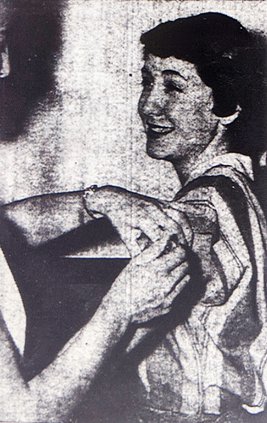
Typhoid precautions and Tribune delivery
Flooding can lead to contamination of drinking water facilities, so the Barton County Medical Society geared up to provide typhoid booster shots for free at the city auditorium that week. They were assisted by the St. Rose hospital school of nursing and Dr. Anol W. Beahm, chairman of the emergency medical care committee of the Red Cross.
Another worry plaguing evacuees was whether or not they would miss their daily newspaper. The Tribune had them covered.
“Dale Simonson, owner of the Automotive Parts company who kept two of his boats busy evacuating Edgepark residents last night, is throwing the boats back into service today to assure flood-isolated subscribers to The Daily Tribune that their paper will be on their porches.
“Routes to be carried by boat are Route 27, Edgepark addition, delivered by John McDowell; routes 16 and 32 in north east Great Bend east of Main and north of 16th delivered by Richard Bahr and Henry Likes; and part of route 18 south of the City Park, delivered by Vernon Kaiser.”
We miss the days when a paper route was a kid’s first job. But, we sure don’t miss the occasions when a boat was the preferred mode of transportation!

